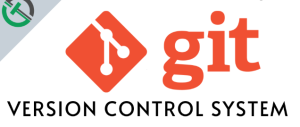One topic that is particularly important in software development is software maintenance, which refers to the process of making changes to software after it has been deployed. Therefore, In this article, Techzvn.net will discuss what are software maintenance techniques? and how are they used in the development process?.
1. What are software maintenance techniques?

Software maintenance techniques are a set of practices and methods that are used to ensure that software continues to function as intended and meets the changing needs of its users.
These techniques are used in the post-deployment phase of the software development lifecycle, where the focus shifts from creating new features to maintaining and updating existing ones.
Overall, software maintenance techniques play a crucial role in ensuring that software continues to function as intended and meets the changing needs of its users. By using these techniques, developers can ensure that the software remains up-to-date, secure, and reliable, ultimately leading to better user experiences and higher customer satisfaction.
2. What are software maintenance techniques? Types of software maintenance

There are several types of software maintenance, each with its own goals and objectives. These types are classified based on the purpose of the maintenance activity and the changes being made to the software. Here are some of the most common types of software maintenance:
- Corrective maintenance: This type of maintenance involves identifying and fixing defects or bugs in the software. Corrective maintenance is crucial for ensuring that the software operates smoothly and without interruptions. When a defect is reported, developers analyze the issue and make the necessary changes to eliminate the problem.
- Adaptive maintenance: This type of maintenance involves making changes to the software to accommodate changes in the external environment, such as changes in hardware or operating systems. The goal of adaptive maintenance is to ensure that the software remains compatible with new technologies and continues to function as intended.
- Perfective maintenance: This type of maintenance involves making changes to the software to improve its performance or functionality. For example, developers may add new features or optimize existing ones to make the software faster or easier to use. The goal of perfective maintenance is to enhance the overall quality of the software.
- Preventive maintenance: This type of maintenance involves proactively identifying potential issues and fixing them before they become significant problems. Preventive maintenance is useful for reducing the risk of downtime or system failures, which can have severe consequences for businesses and users.
3. What are software maintenance techniques? Software maintenance tools
Software maintenance tools are used by developers to help manage and maintain software systems. Here are a few examples of software maintenance tools:

- Version Control Systems (VCS): VCS tools, such as Git or SVN, are used to track changes to software code and allow developers to collaborate on code changes. VCS tools also provide versioning and rollback capabilities, which are critical for maintaining software over time.
- Debugging Tools: Debugging tools, such as gdb or Visual Studio Debugger, are used to identify and fix errors in software code. These tools allow developers to step through code and analyze its behavior, helping to isolate and fix issues.
- Profiling Tools: Profiling tools, such as Valgrind or Java Mission Control, are used to analyze software performance and identify bottlenecks or performance issues. These tools help developers optimize software code for better performance.

- Issue Tracking Systems (ITS): ITS tools, such as JIRA or Bugzilla, are used to track software issues and manage bug reports. These tools allow developers to prioritize and manage issues, ensuring that the most critical issues are addressed first.
- Code Analysis Tools: Code analysis tools, such as SonarQube or PMD, are used to analyze software code for security vulnerabilities, coding errors, and other issues. These tools help ensure that software is secure, reliable, and meets coding standards.
4. What role they play in the development process?

The principles of software maintenance are used throughout the software development process, from initial design to post-deployment maintenance. These principles provide a framework for developers to ensure that software remains up-to-date, secure, and reliable, ultimately leading to better user experiences and higher customer satisfaction.
During the design phase, principles of software maintenance are used to ensure that the software is designed in a way that facilitates maintenance activities. This includes designing the software in a modular and scalable way, using standardized coding practices, and creating thorough documentation.
During the development phase, principles of software maintenance are used to ensure that the software is developed in a way that makes maintenance activities easier and more efficient. This includes writing clean and well-organized code, using version control systems to manage changes, and conducting thorough testing and validation.
After the software has been deployed, principles of software maintenance are used to guide the maintenance process. This includes following a structured approach to maintenance, prioritizing maintenance activities based on their impact on the software, and ensuring that all changes are thoroughly tested and validated before being deployed.
Hope the information summarized above is useful to answer your questions What are software maintenance techniques. In summary, software maintenance techniques are crucial for ensuring that software remains up-to-date, secure, and reliable. Following principles of software maintenance and tips for process improvement can further enhance the maintenance process, resulting in better software quality and higher customer satisfaction.
